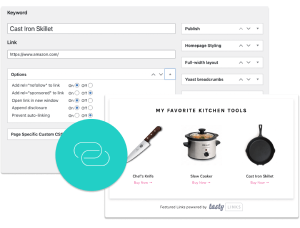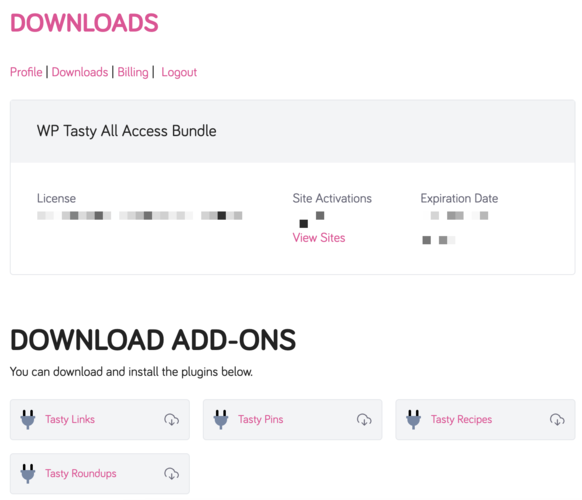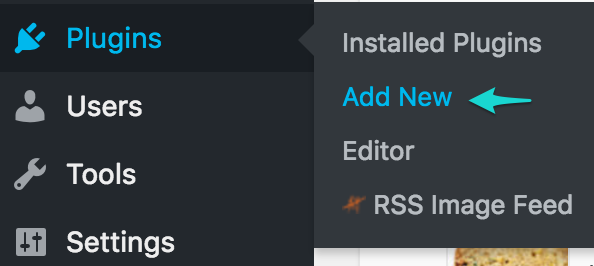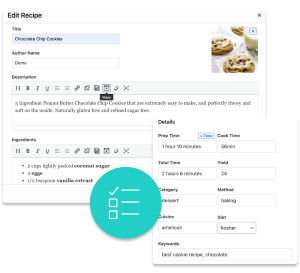I get this question a lot: “Can you put affiliate links in recipes?”
And the answer is yes! Affiliate marketing is one of the easiest ways to make money from your food blog!
Sure, you do some work upfront, like joining affiliate programs and creating content around your favorite products. But, once your links are in place, they can keep earning as long as people keep visiting your recipes.
And here’s the thing…when people make your recipes, they also want to know what kitchen tools you swear by. They love your recipes, and they want to cook just like you! Affiliate links help them do that (while making you money).
So today, I’ll show you exactly how to add them to your recipes so you can earn your slice of the affiliate pie. 🥧
Where to add affiliate links in recipe posts
You DON’T want to throw affiliate links all over your post. That has spammy written all over it.
Instead, think about where they make sense and actually help your audience.
Sharing your go-to homemade pizza recipe? The one with the perfectly crispy crust and 10/10 cheese-pull. 🍕
Well, the people making your recipe want to know EXACTLY which:
- Pizza stone you use to get that crispy bottom
- Mozzarella cheese is best for that melted stretch
- Tomato sauce you swear by
That’s where affiliate links come in. When you link to tools like your pizza stone in a section like ‘Featured Equipment,' you're being helpful and promoting what you actually use.

This means your readers get the same hot and crispy crust results, and you get to bake in a little extra dough.
So, let's go through four spots to put affiliate links in recipe posts.
Oh, and I'll also show you how to use Tasty Recipes and Tasty Links to automatically link to those key ingredients and tools in your blog posts and recipe cards! (And a few other pretty perks of our plugins.)
1. Ingredients list
If your recipe uses certain ingredient brands you love, this is a good spot to drop a link.
Don’t go overboard with affiliate links for recipe ingredients, though. Focus on the ones that truly change the final dish's taste.
Making that homemade pizza? Link to the olive oil and flour that gives the pizza crust its chewy, but crisp texture. Taking eaters straight to a wood-fired pizzeria in Naples on their first bite. 🇮🇹

This helps readers grab what they really need without feeling pressured to buy everything. Besides, that's what Instacart recipes are for. 😉
And don't forget this Tasty Tip: With the Tasty Links WordPress link plugin, your go-to ingredients, like your favorite olive oil or flour, automatically link every time you mention them.

Interested in Tasty Links?
Monetizing your site shouldn’t be hard. Tasty Links makes it easy by managing all your affiliate links and magically inserting them into your posts.
Don’t forget about our 14-day money-back guarantee! Trying out Tasty Links is risk-free!
2. Kitchen tools and equipment
Your readers trust your suggestions, so if a tool makes your recipe better, tell them!
There are a few places that are ideal for mentioning your recipe equipment. Here's where you can add in that stand mixer that kneads your dough or the pizza cutter that slices on the first cut through:
- A “Tools You’ll Need” section before the recipe
- In the middle of the blog post, when talking about the tool
- A special equipment recommendation section
With Tasty Recipes + Tasty Links, you can add your must-have kitchen gear right to that beautiful recipe card.

That way, readers know exactly what you use, and they can buy it too!
And the best part is…they get to shop without leaving your page! Plus, you earn a commission if they buy.
3. Step-by-step instructions
If a specific tool or ingredient is a must in a step, work in your link.
Here's an example that you might work into the body of your blog post's instructions:
Preheat the oven to 475°F and place a pizza stone inside to get that perfect crispy crust!
You can also pop affiliate links right into your recipe card instructions.

It’s simple, clean, and super helpful for readers who want to get it just right. They'll thank you for making it SO easy! 🖱️
From here they might buy, test out and rate your recipe, or even share it with a friend.
4. Recipe notes and tips
Adding flexibility to your recipes makes them a little more user-friendly!
Notes and tips sections are great spots to drop alternative ingredients with affiliate links. 📝 For the pizza, I added notes for making it gluten-free, dairy-free, and spicy! Then, I linked to my favorite vegan mozzarella cheese.
And, when you use our WordPress recipe plugin, Tasty Recipes, it's easy to edit your recipe notes.

How to add affiliate links in recipe posts
Want to see our recipe plugin and affiliate link plugin work their magic? Watch our YouTube video below.
Don't want to watch? No worries, I'll take you through each step. 👇
1. Join an affiliate program
So, where do you get affiliate links for recipe posts? By joining affiliate programs.
If you aren't brand new to affiliate marketing, you probably know how this works. If so, that means you have access to affiliate links and are ready for the next step.
Don't have affiliate links yet?
Pick an affiliate program that's right for you. Think of products you couldn't go without. The ones that seriously impact your food blogger workflow.
Need a little more help? ➡️ I have guides covering the Amazon affiliate program and the Instacart affiliate program. Plus, a roundup of the best food affiliate programs to get you started.
2. Download Tasty Links + Tasty Recipes
Grab Tasty Links and Tasty Recipes for your site.
Love a good deal? 🤑 Try all 4 of our plugins for your food blog for $149 for your first year.
After you get the plugins, you'll get an email with all the info you need, plus a link to your downloads dashboard. There's a picture of your dashboard in the image below. 👇

From here, you'll download the plugin files (and leave them zipped). 🤐
3. Add the plugins to your site
Next, add the plugins to your food blog.
From WordPress, click Plugins > Add New Plugin.

Then, Upload Plugin > Choose File.

After you click Choose File, find your plugin zip file from the Choose File selector, and click Install Now. Then, confirm your license key.
Stuck like dough that needs more flour? Use our handy support doc to upload the plugins to your food blog and verify your license key.
4. Add your affiliate links to Tasty Links for easy auto-linking
Go to your WordPress dashboard and click on Tasty Links > Links > Add New Tasty Link.

Type the name of the product you want to auto-link to in the Keyword section. For example, “Pizza Cutter” or “Pizza Stone.”
Then, copy your affiliate link and paste it into the Link section.

Adjust your link settings in Options. If it's an affiliate link, I make sure to add the nofollow and sponsored tags to the link. And, I have them set to open in a new tab.
Last, hit Publish, and you’re done!
Every time you mention the pizza cutter in your blog posts, Tasty Links automatically adds the affiliate link for you.
5. Add affiliate links in your recipe card equipment section
Tasty Recipes and Tasty Links work hand in hand to create a beautiful equipment section for your recipe cards.
Go to a post with a Tasty Recipes recipe card or add a new one. Then click Edit Tasty Recipe.
Then, scroll down to the Equipment section.
Start typing keywords (like “Cast Iron Skillet” or “Slow Cooker”), and your Tasty Links will automatically show up. Just click on the tool you want to add.

6. Create a featured link block (Optional)
Want to highlight your favorite tools or must-have ingredients in one place?
Try a Featured Links Block! It lets readers see everything they need in an eye-catching section, so they don’t have to scroll or sift through text.
Want to create a featured link block? Go to your WordPress post and click [+] > Tasty Links > Featured Links Block.
Then, add the links you want to show off in your blocks and adjust the design to match your blog’s look.

Happy with how it looks? Save your changes so your readers see all your top recommendations in one easy-to-shop spot!
Best practices for adding affiliate links to your recipe blog
As I wrap up, I want to give you some final tips to make your affiliate links more helpful, authentic, and overall better for your blog.
- Stay honest and legal with affiliate disclosures
- Build & keep trust by only linking to products you use and love
- Add links where they're most helpful
- Create bonus content like video tutorials or product reviews to boost user engagement and give it more value
And remember, our tools make your affiliate links work harder and smarter. 💡
Manually adding affiliate links to every recipe? That’s a time sink. Not to mention, if your recipe cards aren’t optimized for search engines, you’re also missing out on potential traffic.
That’s where Tasty Links and Tasty Recipes come in.
Tasty Links auto-links your favorite tools and ingredients across your blog — so you’re not constantly copying and pasting. Tasty Recipes adds structured data to your recipe cards, making them easy for search engines to read (and rank higher). 📈

Interested in trying Tasty Recipes?
With our easy-to-use, customizable recipe card plugin, Tasty Recipes helps you look good — and your recipes look even better.
Take a look at all Tasty Recipes has to offer.
Also, don’t forget about our 14-day money-back guarantee! Trying Tasty Recipes is risk-free!

